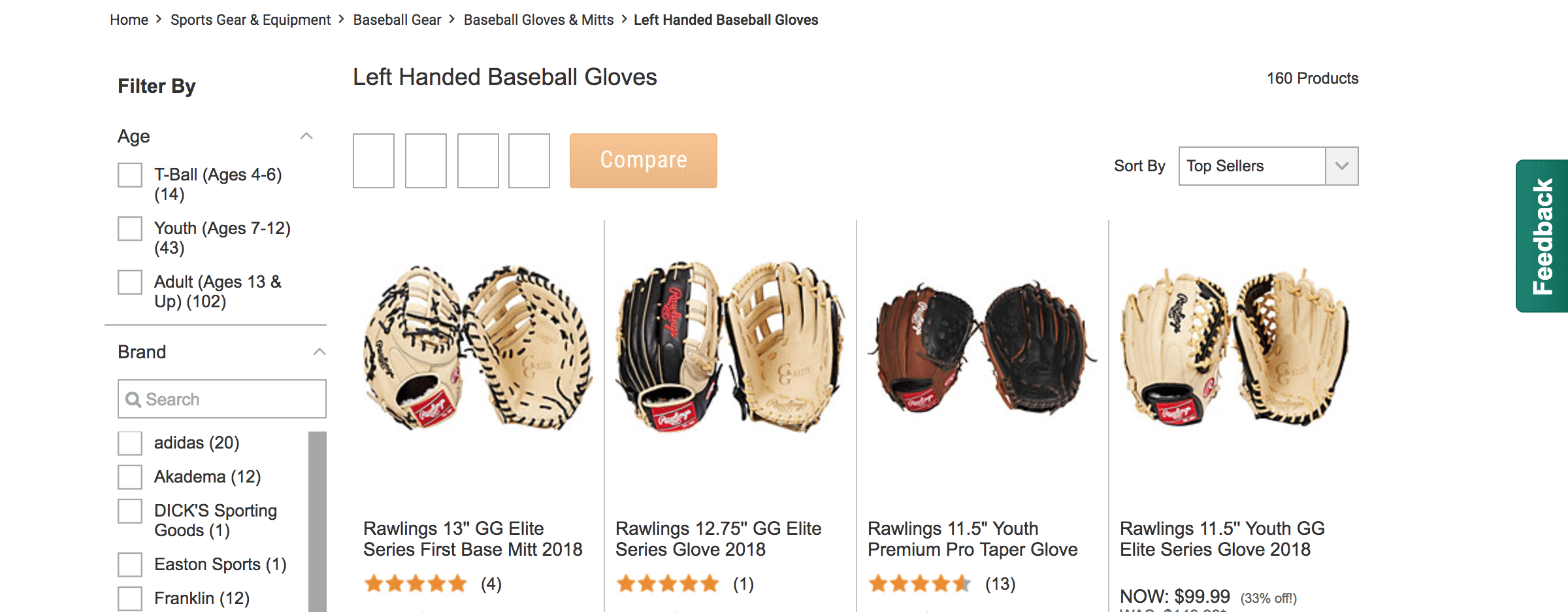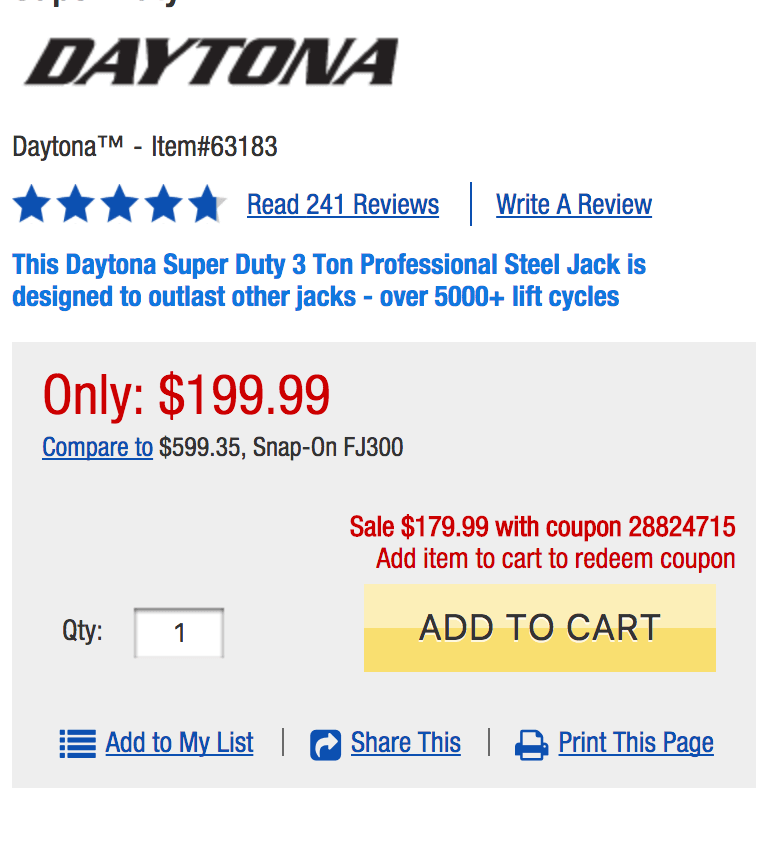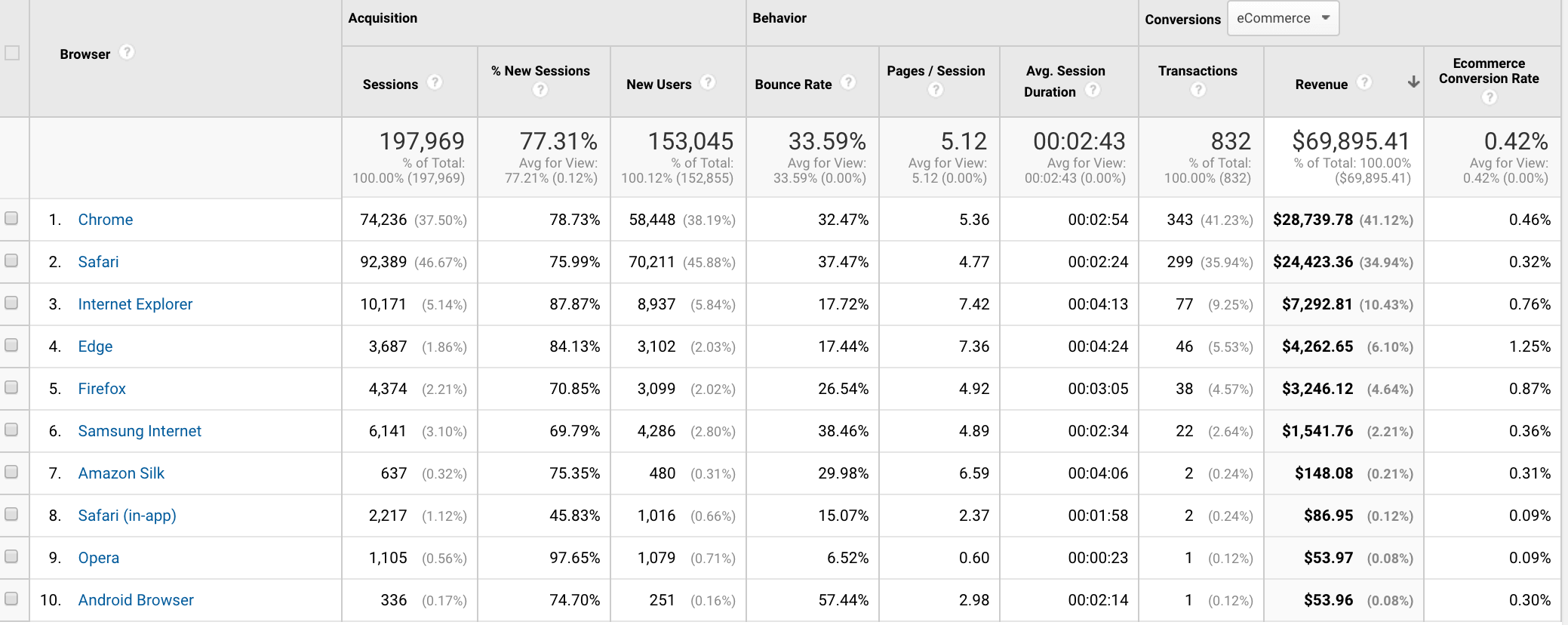
E-commerce seems simple. Build a website with products on it, set up a payment gateway, and shipping, then people will come and buy. And in it’s very simplest form that’s true. But how do you measure success in e-commerce beyond sales figures? Is your website successful compared to others in your marketplace?
There are a number of benchmarks that the industry have created to help us as marketers determine if we’re on the right path for success. So what are these bench marks and how does your website stack up? Is your e-commerce store making the grade?
Benchmark 1: Bounce Rate
Bounce rate is all too often used by digital marketers as a gauge for engagement on a website. It can often be overused to determine if your website is doing well. However, in the case of e-commerce it’s can be an important metric to determine if searchers are finding what they want from your website.
I did a Google search for “left handed baseball gloves.” Chose the result that answered my question the best.

Because they set their categories up properly, it took me right to the section I wanted.

From there I clicked on a glove, keeping their bounce rate down. Because of their proper website setup their bounce rate is probably far lower than other websites who don’t have these things set up properly.
For Dick’s Sporting Goods bounce rate is probably something that they take very seriously because of the searcher intent.
So what is a good bounce rate for e-commerce? According to research if you’re below 36% bounce rate, your website is a top performer.
Benchmark 2: Cart Abandonment
Oh cart abandonment, the plight of e-commerce stores the world over. Honestly, if this sort of thing occurred in brick and mortar stores it would be weird to watch. You see a hundred people come into your store, and 75 walk out with nothing in their hands. But we all do it online. We’re researching, dreaming, or we’re just bored. In any case we all frustrate e-commerce marketers and business owners.
So what are some reasons that folks abandon their cart?
- Unknown Shipping Costs
- Just Looking
- Technical Issues
- Decided to Buy In-Store
There are of course other options but these are some of the big ones. What are some ways that you can mitigate these? Let’s look at them individually.
Unknown Shipping Costs – If people don’t know what the cost for shipping they will often will put items in their cart just to find out. A simple way to fix that is to advertise those costs right up front.
Going back to Dick’s, I know if I buy one of these gloves that average $100, I’m guaranteed to not pay shipping. Cool, now I know I won’t have any unexpected costs and when I’m ready to buy I can.

Just Looking – Let’s be honest – that’s most of us. Bored at lunch, check out what’s on sale at your normal shopping spots. We toss them in the cart to have one click to order them in the future – except we rarely do.
One way to keep things out of the cart and keep your abandonment rates down is by creating shopping lists. This is especially important if you have a physical store.

Strangely, I couldn’t keep in my baseball glove scenario because Dick’s doesn’t use shopping lists, so Harbor Freight had to suffice. One suggestion I have for many companies like Harbor Freight or even Amazon is to make these buttons bigger. For many window shoppers having lists to reference in the future are important.
Decided to Buy In-Store – See previous. This is a two for one solution.Tracking offline marketing is harder to track, so if your developer can either tie things to a POS system, or have a “Purchased In Store” button in those lists, you can start to tie online and offline marketing.
Technical Issues – This is where having the right development partner comes in. We have a blog about that already so no need to go into detail here. You can check out the blog on how to pick a web development partner by clicking here.
Now, with that said, issues arise even with the best partner. Using tools like Inspectlet to track visitor usage will help you to sort out what actually happened and not just a visitor’s interpretation. This will help you mitigate problems in the future.
Benchmark 3: Mobile Adaptability
As folks are researching the products they want to buy, they use their mobile device more than 50% of the time. They may end up purchasing more on a desktop, but the initial work is done on a smart phone. If you’re not focussing on page load time and ease of use on a mobile device, the chances they’ll come back to finish their order are minimal.

As you can see the majority of visitors of this site are from mobile devices.

However, the majority of sales came from desktop visitors.
Are You Making the Grade?
At the end of the day the most important grade is your sales of course. But if you’re thinking, hey we’re doing ok in sales. And then you look at these other metrics and find room for improvement, just think how good think how good they could be. Conversely if your sales are down, taking a look at these three areas may help you solve why this might be the case.






